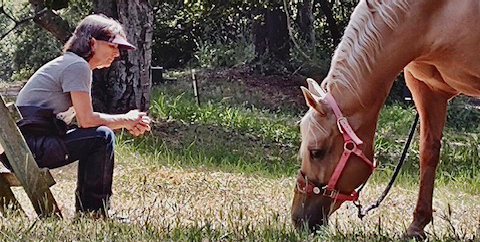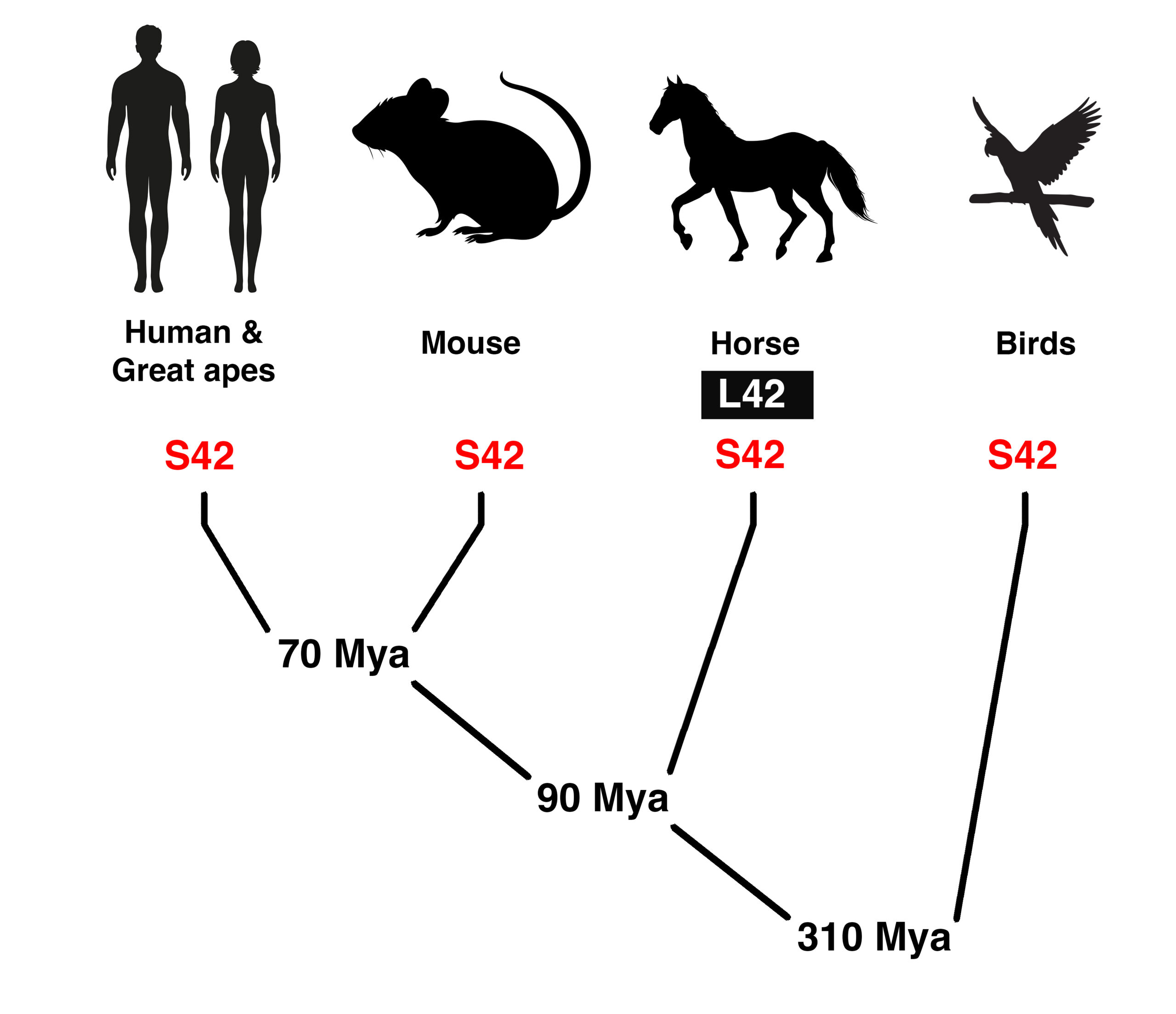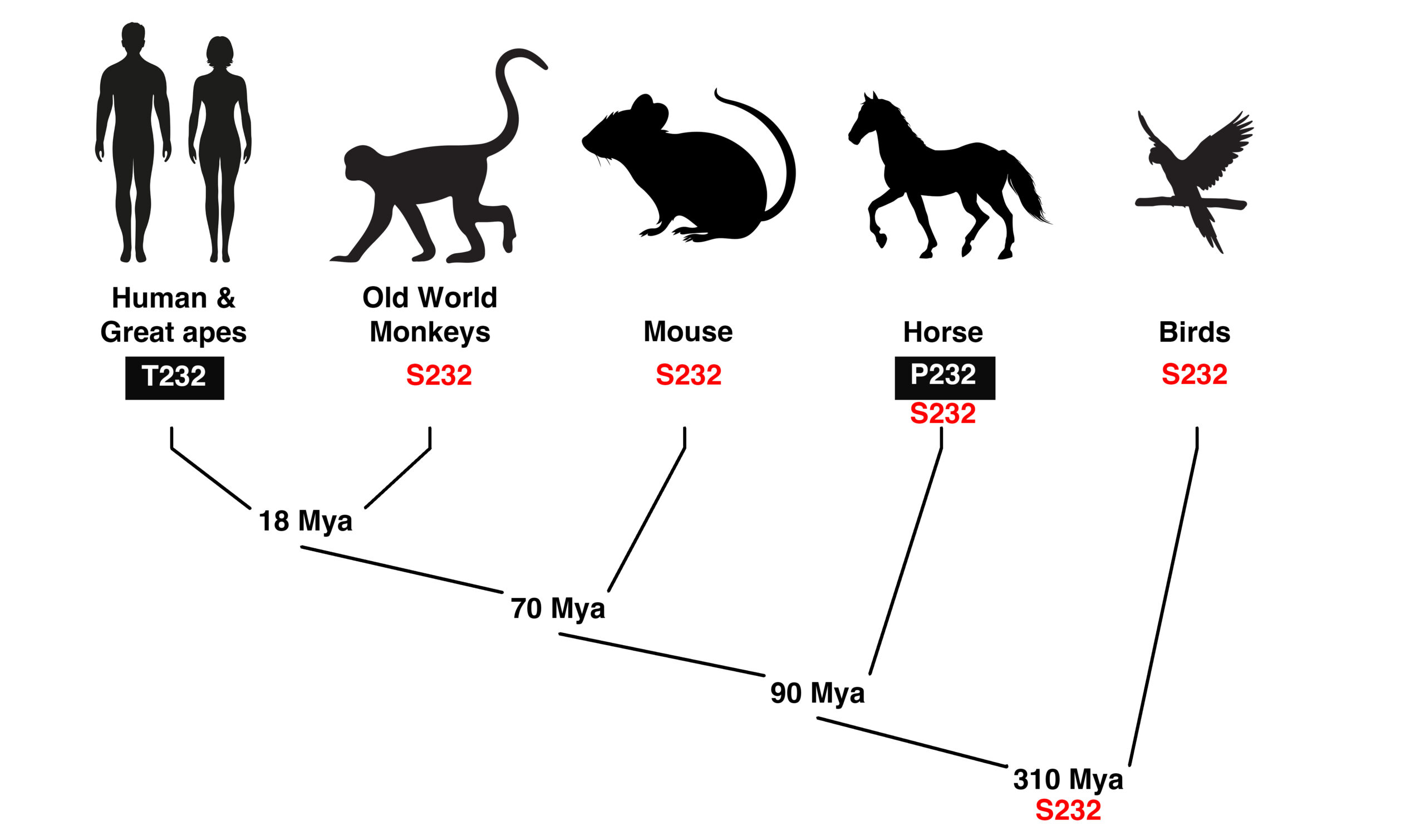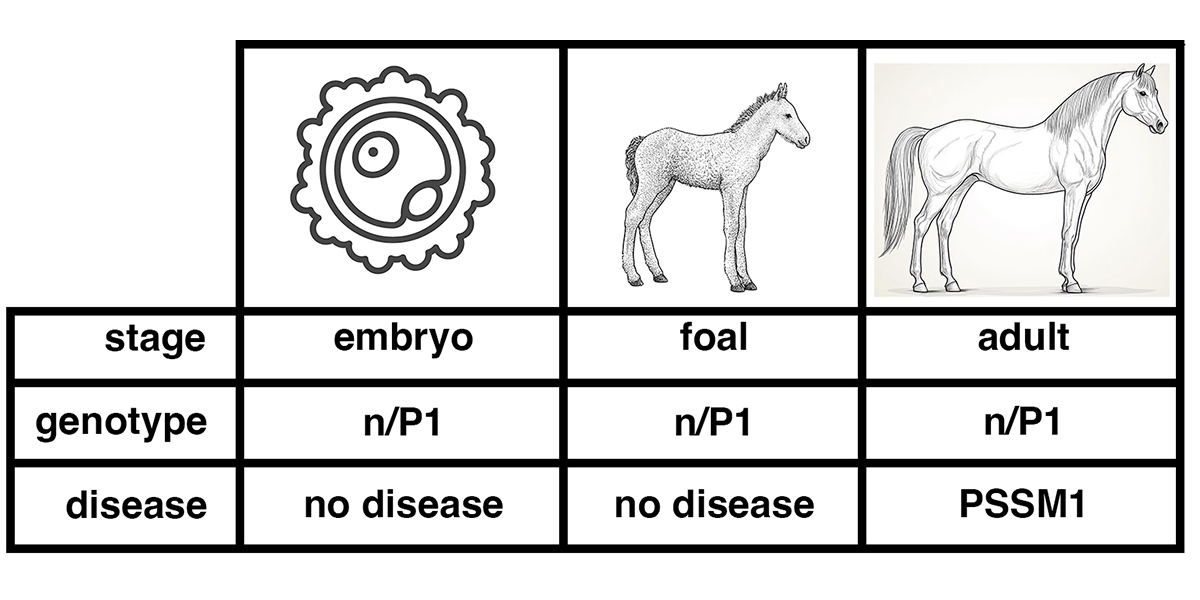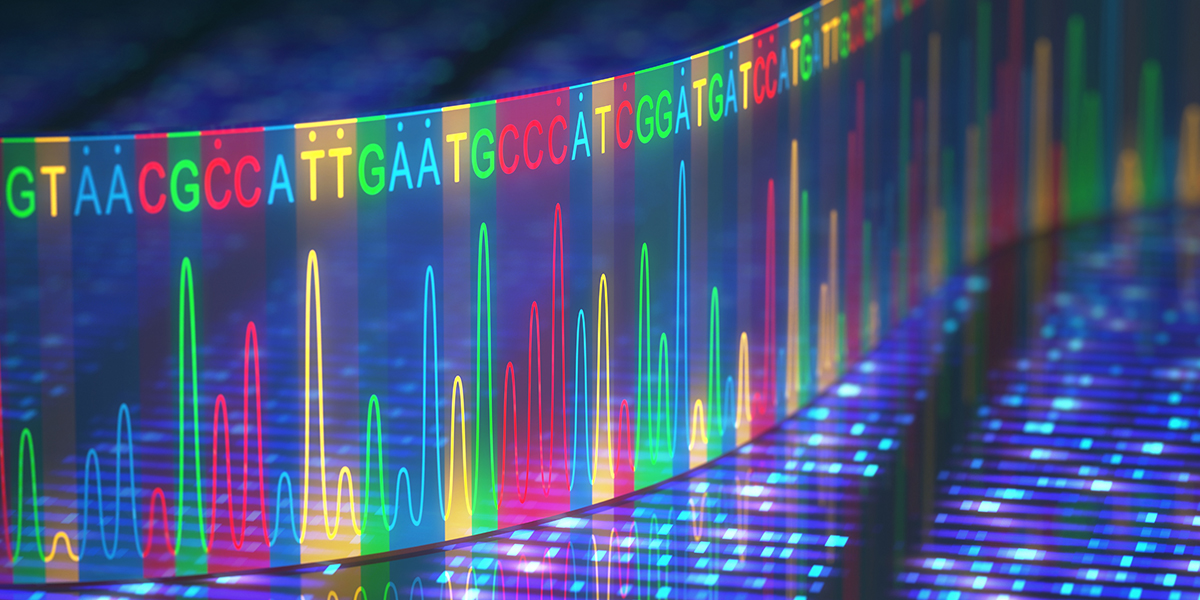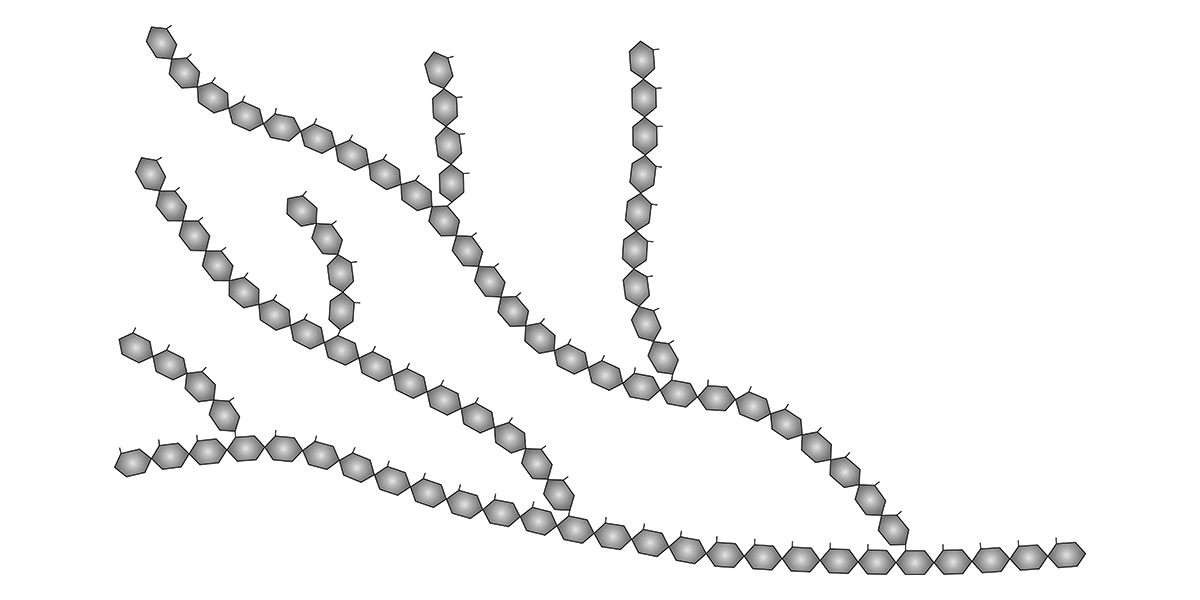Our blog
Resources and insights
The latest industry news, interviews, technologies, and resources.
Blog categories
Blog
An Elephant to Discuss in the Equestrian Community
I’m an amateur dressage rider, Animal Reiki Practitioner, and trail enthusiast looking for my next happy, healthy trail partner. That means I’m horse shopping, which should be an exciting experience! As of Summer 2025, I tested 19 horses for PSSM2/MIM as part of my pre-purchase process. These horses came from all backgrounds registered and grade. Draft crosses. Iberians. Morgans. Mustangs from the same herd. Even a grade Haflinger. Over half of the horses I tested carry one or more variants of PSSM2/MIM. The breeder of my affected horse, insisted the genes don’t guarantee clinical signs. Other skeptics say, “correlation doesn’t equal causation,” as if that explains away the welfare concerns many owners are seeing firsthand. Maybe if your horse is a companion, or breeding stock not in work, you’ll never know. If they’re only used for breeding, and get trimmed twice a year, the cracks in health might stay hidden. But once they’re asked to work, the signs of pain are revealed. Stiffness. Resentment. Resistance. And acting like just being a horse is hard. Many are dangerously explosive. A grouchy “pain face” might be the only clue. These horses struggle to trailer and settle into a new environment as well….
Blog
Muscles as Messengers: How Muscle Myopathies Are Revolutionizing Equine Health Care
After two decades in the veterinary medical field, I’ve witnessed countless treatment protocols, diagnostic advances, and management trends. Yet nothing has transformed my understanding of equine health quite like muscle myopathies. These complex conditions—PSSM1, MIM and its variants, MFM, MYHM, and so forth—have become unexpected catalysts, revealing fundamental truths about health that extend far beyond the horses they affect. What makes these conditions so instructive isn’t their complexity, it’s their honesty. Unlike many equine ailments that respond to pharmaceutical intervention, muscle myopathies strip away our comfortable reliance on medical management. They demand something more fundamental: a return to species-appropriate nutrition, natural movement patterns, and collaborative care that honors the whole horse. When Medicine Meets Its Match In my years as an equine nutrition professional, I’ve consulted on hundreds of muscle myopathy cases. The pattern is strikingly consistent: owners arrive having tried every supplement, every medication, every promise of a solution. Their horses continue to struggle. Not because the veterinary care was inadequate, but because these conditions require something medicine alone cannot provide. This is where beauty emerges from the burden. When conventional treatments offer minimal relief, we’re forced to examine our husbandry practices and whether our convenient systems serve the…
Blog
PSSM/MIM: The Dream Stealer
When you’ve exhausted all your resources and drained your back account, trying to find what is wrong with your horse, then what do you do? You dig a little deeper, research longer and keep asking questions. You get told you are crazy, your horse has got the better of you, and mostly you are making stuff up. You consider euthanasia but the good days come and you are left feeling hopeful and yet still frustrated. Here is the story of my beloved Tuned up Whiz it, aka Whizzy. Her current diagnosis is PSSM type 2 via biopsy and n/P2, n/Px n/MYHM via EquiSeq DNA testing. I met Whizzy the fall of 2009, she was 4 years old. Her price was way out of my range due to her breeding and intense training to be a reining horse. Whizzy just could not spin in one direction fast enough to meet the needs of the owner. She needed to move her fast as she had already bought another 2 year old. I took her on trial and I had x-rays that revealed some changes in her right front hoof, my farrier thought it no big deal. I made a super low offer…
Blog
K1 Allele of COL6A3
Introduction This blog post explores the K1 allele of the equine COL6A3 gene, which encodes Collagen type VI alpha 3 chain. Portions of this blog post serve as additional sources of information to supplement the COL6A3 Gene Page. The K1 allele of COL6A3 carries a missense mutation, shown below. The protein model XP_014595871.3 was used to assign amino acid positions. Figure 1. Alignment of partial COL6A3 protein sequences from horse, compared to the K1 variant. The position of the amino acid affected by the substitution is highlighted in red. We present data to support the hypothesis that the K1 allele of COL6A3 is damaging. The K1 variant (G1976A) substitutes an alanine for a glycine. The affected amino acid is in the triple-helical portion of COL6A3. The general sequence of this region in all collagens is GLY-X-Y, where every third amino acid is a glycine. The X and Y amino acids are generally poorly conserved. In the formation of the collagen triple-helical region, the glycine residues are points of contact between helices. Glycine has the smallest R group of any amino acid (a hydrogen atom). Other amino acids in these positions interfere with triple helix formation to some extent. For further discussion,…
Blog
P3 allele of FLNC
Introduction This blog post explores the P3 allele of the equine FLNC gene, which encodes filamin-C. Portions of this blog post serve as additional sources of information to supplement the FLNC Gene Page. The P3 allele of FLNC carries two missense mutations, shown below. The protein model XP_023495410.1 was used to assign amino acid positions. Figure 1. Alignment of partial FLNC protein sequences from horse, compared to the P3a and P3b variants. The positions of the amino acids affected by the two substitutions are highlighted in red. We present data to support the hypothesis that the P3 allele of FLNC is damaging. For the P3a variant (E794K), the substitution of lysine (positively charged) for glutamic acid (negatively charged) is a somewhat conservative substitution. For the P3b variant (A1248T), the substitution of threonine (polar uncharged) for alanine (hydrophobic) is a nonconservative substitution. Evolutionary conservation provides convincing evidence that the P3 allele of FLNC is damaging. We use public data to show that the reference allele of P3a (E794) is highly conserved across 389 species of mammals, birds, reptiles, amphibians, and fish representing 29 unique sequences of the 41-amino acid query sequence centered on the position of the E794K allele, covering about 400…
Blog
P4 Allele of MYOZ3
Introduction This blog post explores the P4 allele (S42L) of the equine MYOZ3 gene, which encodes myozenin 3. Portions of this blog post serve as additional sources of information to supplement the MYOZ3 Gene Page. We present data to support the hypothesis that the P4 allele of MYOZ3 (S42L) is damaging. The substitution of leucine (hydrophobic) for serine (polar uncharged) in the P4 allele of MYOZ3 is a nonconservative substitution of a chemically dissimilar amino acid. Evolutionary conservation provides convincing evidence that the P4 allele of MYOZ3 is damaging. We use public data to show that the reference allele is completely conserved across 448 species of mammals and birds representing 155 unique sequences of the 41-amino acid query sequence centered on the S42L allele, covering over 310 million years of evolutionary history. P4 allele of equine MYOZ3 Evolutionary conservation provides evidence on whether the P4 allele of MYOZ3 is damaging. In this approach, predicted MYOZ3 protein sequences are compared among a number of different species. This method, applied to mammals and birds, is shown below. A 41 amino acid segment of the protein sequence of equine MYOZ3 (XP_005599348.1), centered on the position of the variant, is shown below. This sequence is compared to…
Blog
P2 Allele of MYOT
Introduction This blog post explores the P2 allele (S232P) of the equine MYOT gene, which encodes myotilin. Portions of this blog post serve as additional sources of information to supplement the MYOT Gene Page. We present data to support the hypothesis that the P2 allele of MYOT (S232P) is damaging. The substitution of proline (heterocyclic) for serine (polar uncharged) in the P2 variant of MYOT is a nonconservative substitution of a chemically dissimilar amino acid. Evolutionary conservation provides convincing evidence that the P2 allele of MYOT is damaging. We use public data to show that the reference allele is widely conserved across most of 244 species of mammals and birds covering over 310 million years of evolutionary history. There is a prominent exception in humans, where the MYOT gene has a conservative amino acid substitution that has gone to fixation (S232T). The substitution of threonine (polar uncharged) for serine (polar uncharged) in human MYOT is a conservative substitution of a chemically similar amino acid. This variant has gone to fixation in all the great apes most closely related to humans (chimp, bonobo, gorilla, and orangutan), but is absent from Old World monkeys, placing the origin in the common ancestor to…
Blog
Genes First!
EquiSeq has released a major revision to the software that powers our website and database. We now present genetic test results starting with the affected gene. Here is an example of the appearance of the new horse profile pages. Figure 1. A horse profile page returning results from EquiSeq. This horse has tested positive for the K1 variant of COL6A3 (n/K1), negative for the other five variants in EquiSeq’s DNA test, and also negative for the P5 and P6 variants of DYSF, an experimental test not available commercially. What is a gene? In the context of mammalian genetics, a gene is a unit of hereditary information made of DNA. These segments of DNA encode proteins. Every mammal has two copies of every gene (except for X-linked genes in males). In a population, there are variant forms of genes, called alleles of that gene, that differ in their DNA sequence. Some alleles produce proteins that differ from the reference or wild-type sequence in minor ways that do not affect protein function. Other alleles produce proteins that are nonfunctional or have an altered function, causing a change in the development or function of the organism. What is a disease state? Disease is defined…
Blog
Study of horse genomes explores genetic burden
A team of researchers at the University of Minnesota and the University of California, Davis, have published a landmark study of the predicted genetic burden in horses, based on the analysis of whole genome sequence data from 605 horses (1). They conclude that the genetic load in horses is 1.4 – 2.6 times that of the human population. The authors discuss the unique advantages of the study of horse to understand human phenotypes, especially those associated with athletic performance.
Horse owners have asked us to explain this paper, as it mentions the genetic variants that are in EquiSeq’s panel of DNA tests. Here we review the methods and major findings of this paper. We include background information typically absent from the primary literature in order to make the paper more accessible to non-specialists.
Blog
What is PSSM?
Polysaccharide Storage Myopathy (PSSM) is a form of equine exercise intolerance characterized by episodes of tying up. Horses with this condition have a particular set of clinical signs, including displays of pain, refusal to move forward, trouble standing for the farrier, and standing “parked out” as if to urinate. All of these are signs of a disease state affecting muscle. Affected horses often show enlarged granules of glycogen in muscle tissue obtained by biopsy. These enlarged glycogen granules are relatively resistant to digestion by amylase, an enzyme that completely degrades normal glycogen granules under standard conditions. Glycogen is a polysaccharide, a polymer of the simple sugar glucose, a monosaccharide. The synthesis of glycogen from glucose in muscle tissue provides a store of energy. When energy is needed, the glycogen is broken down into glucose, which can be metabolized for energy. The image above shows a) the chemical structure of glucose, b) the general structure of glycogen in which glucose units are joined in a branching structure, and c) the chemical structure of the linear polymers of glucose and the branch points. The synthesis of glycogen from glucose is highly regulated. In normal horses, glycogen is synthesized when energy needs are…


